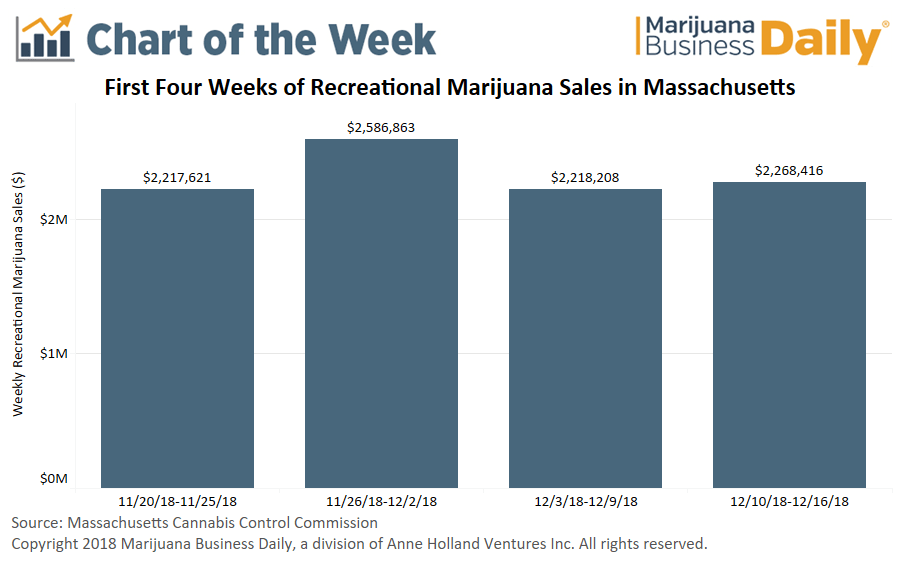New technology, agile teams and a watchful eye help with inventory management and forecasting
As new legal cannabis markets emerge and states adjust existing regulations, inventory management and forecasting become increasingly challenging for marijuana retailers and product manufacturers.
Regulatory shifts can mean unloading product that will soon be uncompliant, then stocking product that meets new requirements. And when new recreational markets come online, cannabis-related tourism can dip in established adult-use markets, causing sales to plateau.
In the following pages, the owners of two vertically integrated cannabis operations and an infused product company weigh in on the challenges of managing retail and wholesale inventory, strategies to navigate those challenges and advice on how to improve inventory management.
Managing Wholesale and Retail Needs
Pakalolo Supply Co.
Fairbanks, Alaska
Vertically integrated with cultivation, retail, wholesale and distribution licenses
Founded in 2016
Challenges: In October, Keenan Hollister, co-owner of Pakalolo Supply, opened the company’s second retail store. Cultivating cannabis for two shops and a handful of wholesale clients requires inventory planning up to half a year in advance. If you’re vertically integrated with wholesale operations, the challenge of managing cultivation inventory—and avoiding oversupply—is amplified. In new markets, some cultivators start with mass production and overestimate consumer demand or their ability to move product to retailers, Hollister said. That can lead to oversupply issues for growers or force them to cut their wholesale costs.
Solutions: When it comes time to harvest Pakalolo’s cannabis and cut clones for its next round of growing, Hollister uses San Jose, California-based Green Bits, his company’s point-of-sale system, and the state’s seed-to-sale tracking system, Metrc, to forecast what it needs to grow for its own retail stores and what it can put on the wholesale market. The business isn’t using data platforms or online wholesale marketplaces yet, because the two systems provide all the data Pakalolo’s team needs.
“Green Bits shows us details,” Hollister said. “It shows us how grams and 3.5-gram units and pre-rolls are selling and what our top sellers are. Metrc is less useful as an inventory tracking system on the retail side because it doesn’t show subproducts. But it shows us what we’ve got growing and what we have coming up.”
This inventory forecasting is done four to six months in advance, and it takes into consideration what sells well in Pakalolo’s shops and what the company can reasonably afford to put on the wholesale market.
Expert advice: If you’re a cultivator with too much inventory on hand, don’t rush product to the market. It solves an immediate need for cash flow, but it undermines your brand and marketing strategy. Four to six months before you plan for a product to hit shelves, analyze inventory and retail sales for particular strains. Invest more resources in cultivating popular sellers for your retail operation and devise a “get-to-market strategy” that allows ample time to advertise your products and partnerships, Hollister advised.
Relying on Technology
Caliva
San Jose, California
Vertically integrated with cultivation, retail, wholesale and distribution licenses
Founded in 2015
Challenges: New packaging and testing regulations enacted July 1 in California put some cultivators and product manufacturers out of business, while others were forced to scramble to become compliant. Those regulations created a surge in demand for compliant products, and Caliva had compliant product ready to stock, including flower, vape cartridges and pre-rolls. Inventory management for vertically integrated businesses with wholesale operations is more challenging because it requires managing processes for both retail and wholesale inventory, Caliva CEO Dennis O’Malley said.
“Inventory control is very complex for vertically integrated businesses with multiple distribution points and multiple product lines coming in and out,” O’Malley said. “After a period of unprecedented growth, inventory management became more critical.”
Solutions: Caliva has integrated its point-of-sale (POS) system, Green Bits, with Seattle-based Headset’s cannabis data platform. That combination gives Caliva’s inventory-control team a real-time indicator of its wholesale business. Headset’s Bridge service—a vendor-managed inventory system—allows Caliva’s team to see a retail partner’s inventory. That, in turn, helps Caliva forecast upcoming inventory needs and dial in its manufacturing and production schedules.
For its direct-to-consumer inventory, Caliva developed proprietary software and integrated its other applications—Green Bits and Headset—so there’s a single source for inventory information, including what’s in stock and what needs to be reordered. All of Caliva’s products have one master inventory number. Even if products are sold through different channels—retail, web or delivery—once a product is listed as out of stock in one channel, its status updates across systems.
Expert advice: Hire inventory-control managers with experience in other highly regulated industries—think pharmaceutical, agriculture or perishable-foods companies. Experience in high-traffic, high-volume, direct-to-consumer businesses such as Amazon or FedEx is helpful, too. Those candidates are generally more agile and advanced in managing inventory control systems, O’Malley said.
And—perhaps most important—don’t run out of product, O’Malley said. It sounds simple, but it’s hard to execute at scale when you manufacture, distribute or sell hundreds of products.
Navigating New Regs and Seasonal Swings
Wana Brands
Boulder, Colorado
Multistate infused product manufacturer
Founded in 2010
Challenges: Seasonal sales numbers and new regulations make inventory management challenging for product manufacturers. Wana Brands sees a 20% sales swing between slow and busy seasons, said company CEO Nancy Whiteman. New regulations can be tricky to navigate, too.
“You could be humming along, and due to regulatory changes, you might have to change a process like packaging, labeling or testing,” Whiteman said. “You might have to throw out and reorder packaging and could get backlogged on that.”
Solutions: To plan for sales spikes, use slow seasons—when tourism dips in late September to the holiday season, and April to June in Colorado—to replenish your backstock so you have it available during busy seasons, such as holidays. Hiring temporary employees to get you through busy seasons is an option. Ditto for selectively choosing to not refill positions as they’re vacated during slow seasons, Whiteman said. As far as regulatory changes, track and be aware of what’s in the pipeline. You can do this by joining a trade association or having an in-house compliance officer who monitors state regulations. Understand time frames for regulatory shifts that might affect your manufacturing processes and inventory. Manage your packaging inventory as tightly as possible, Whiteman said, because changes in packaging and labeling are common.
“Part of the skill of managing inventory is knowing what you’re managing to and being very clear about that,” Whitman said. “As a manufacturer, you have to be thinking several months in advance and have a solution ready to go.”
Expert advice: Closely monitor week-over-week sales changes for as many years as possible, so you can see what the patterns are in seasonality as well as big holiday weekends, Whiteman said. And make sure your sales team is aligned with your production team: It is critical to have sales and production closely aligned on any changes that might affect manufacturing and inventory management. If a dispensary chain is planning a big product promotion, for example, you must be sure you can fill the order.
Leveraging Technology
Technology designed for cannabis businesses is making it easier to manage inventory and forecast sales.
Point-of-sale (POS) systems integrated with data platforms and wholesale business-to-business marketplaces can eliminate the need for manual inventory tracking and back-and-forth communication with multiple vendors.
Cannabis businesses sometimes use Google Sheets or Google Jamboard in lieu of new, streamlined inventory-tracking solutions that may have an added cost to operate, industry technology experts said. The downside to working in these Google programs, experts said, is they require more manual data entry than new automated systems, and they don’t provide comprehensive business intelligence or automated ways to collaborate with vendors.
Those platforms also require inventory tracking to be done in a system separate from what the technology retailers use in their day-to-day operations, such as POS systems.
“We’ve asked (businesses) the question, ‘What was your most-sold product yesterday?’” said Ryan Smith, co-founder and CEO of of Los Angeles-based LeafLink, a business-to-business wholesale marketplace for retailers and product manufacturers to buy and sell product. “And they tell us their infused drinks do really well, or their chocolates do really well, but they don’t have a finite, quantifiable answer.”
In part, the technology now available to cannabis businesses to streamline inventory management is taking a page from the playbooks of big-box stores, which use automated systems to manage inventory intake from thousands of vendors, said Cy Scott, co-founder and CEO of Headset, a Seattle-based cannabis data platform that created Headset Bridge, a retail product that gives businesses visibility into everything from sales numbers to inventory levels.
Most systems—POS, data platforms or wholesale marketplaces—don’t perform all functions. Rather, application programming interfaces (APIs) create an ecosystem that allows the complementary features of the various technologies to give retailers a more complete picture of their inventory.
According to Smith, Scott and Ben Curren, founder and CEO of San Jose, California-based Green Bits, a retail platform and POS system designed for cannabis businesses, the integration of data platforms and wholesale B2B marketplaces with some retail point-of-sale systems can:
- Bar code every item in a retailer’s inventory to cross-reference with a state’s seed-to-sale tracking system.
- Run audit reports that reconcile the inventory you have on hand with the inventory on file in the state’s tracking system.
- Show retailers the sales velocity for individual products, which helps them determine whether to increase or decrease reorders.
- Allow shops to set par levels on products and schedule automatic reorders when supply levels
reach par. - Create permissions for manufacturers to see how their products are selling and recommend reorders.
- Reduce correspondence with vendors who—because of access permissions—have insight about when you need to reorder.
When technologies are integrated, their functions can allow retailers and manufacturers to identify the “Goldilocks amount” of inventory to carry or produce, Headset’s Scott said.
“You want to have the amount of inventory necessary to fill demand, because if you buy too much product, your cash is in inventory instead of in marketing or in another important part of your business,” Curren said.
The biggest “value-add” that emerging technology for cannabis businesses offers, Curren said, “particularly in a market where the environment is changing quickly, is that retailers can actually focus on the act of retail sales instead of tracking information.”
– Joey Peña





